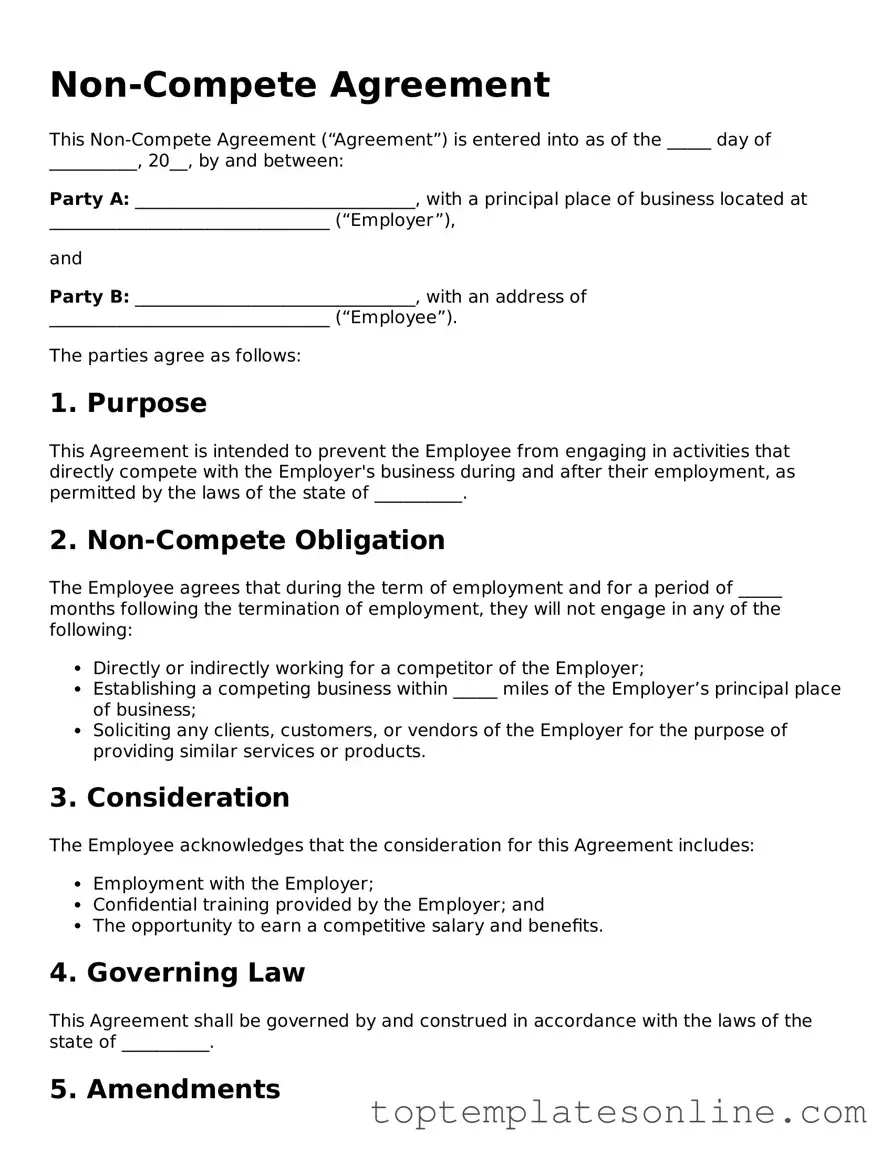Attorney-Approved Non-compete Agreement Form
A Non-compete Agreement is a legal document that restricts an individual from engaging in business activities that compete with their employer for a specified period after leaving the job. This form is often used to protect a company's confidential information and trade secrets. Understanding this agreement is crucial for both employers and employees to ensure fair practices and protect their rights.
Customize Non-compete Agreement Here
